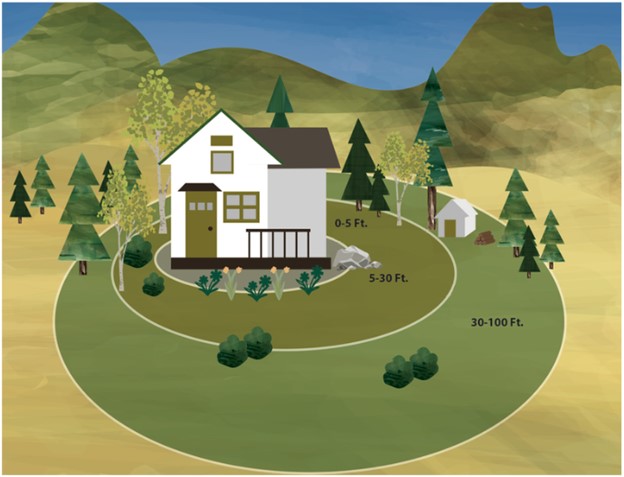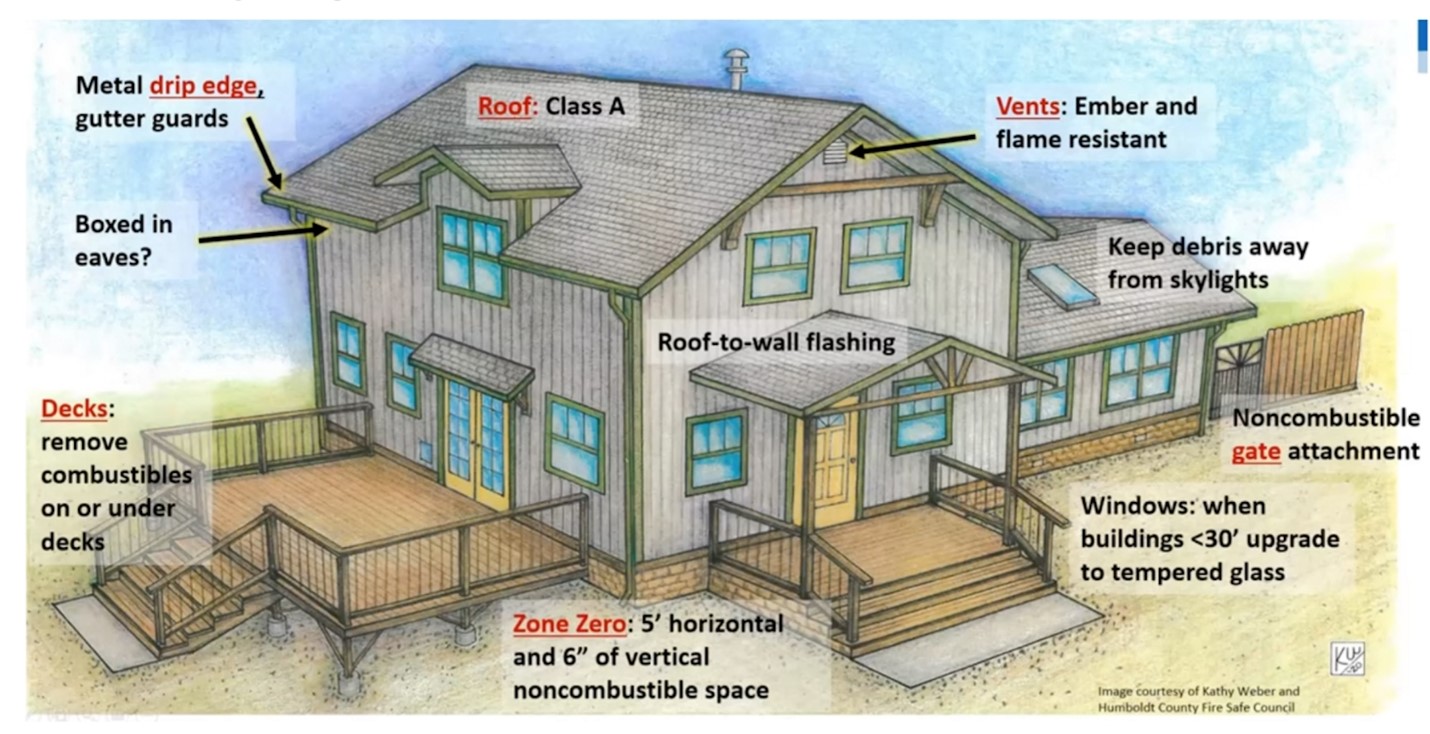Wildfire resilience starts at home.
In wildfire-prone areas like the Eastern Sierra, creating defensible space and hardening your home are crucial steps every resident can take to protect their property and community. At Whitebark Institute, we believe in empowering every full-time and part-time resident with the tools and knowledge they need to better prepare their properties for wildfire.
Why Home Preparedness Matters in the Wildfire Urban Interface
Eastern Sierra communities reside in the wildland urban interface (WUI), meaning our properties share borders with undeveloped natural areas. Embers are the most common cause of home ignitions during wildfires and can travel more than a mile during a wind event. Wildfire preparedness isn’t just about protecting a single property—it’s part of a broader responsibility to reduce wildfire risk for the entire community.
When you prepare, you contribute to the safety of your neighbors and play a part in protecting our landscapes.
The Defensible Space Zones
Creating a buffer around your property is crucial to slowing or stopping the spread of wildfire and provides a safer environment for firefighters to defend your home. Defensible space zones describe actions to take on the first 100 feet from your home to remove ember catchment areas, reduce opportunity for radiant heat ignition, and eliminate pathways for a wildfire to burn directly to the home.
Download Home Hardening & Defensible Space Brochure
Zone 0 (0–5ft) Ember Resistant
This area is the most important area to maintain to decrease your risk for home ignition. Remove combustible materials including vegetation, patio furniture, or wood piles
Zone 1 (5–30ft) Lean, Clean, and Green
Vegetation should be minimal and well maintained. Keep shrubs and trees well-spaced, remove dead vegetation, and limb low branches of trees to eliminate fuel ladders.
Zone 2 (30–100 ft) Reduced Fuel
Continue to reduce the density of fuel loads to the edge of your property. Give extra vertical space on properties built on a slope.

Home Hardening: The Key to Defending Your Structure
Home hardening refers to improvements you can make to a structure using fire-resistant materials to fortify ignition-prone areas and improve survivability. Examine ways your home may be vulnerable to embers entering your home through gaps or where embers may collect and ignite.
Home Hardening Strategies
- Replace wood roofs with non-combustible Class A materials.
- Keep roof and gutters clear of any accumulated debris.
- Install ember-resistant vents or retrofitting with 1/8” mesh.
- Seal gaps in eaves and under doors to prevent ember intrusion.
- Upgrade to double paned tempered glass windows.· Remove combustibles on or under decks.
- Remove fire “wicks” such as fences or decks by interrupting spread with a noncombustible attachment close to the home.
- Consider using metal flashing along edges of dormers and other ember catchment areas.
Learn More
Resources to Get Started
These organizations are trusted sources of information on defensible space and home hardening. Explore them to take action today.
CAL FIRE’s guide to creating defensible space, home hardening, and emergency planning.
The National Fire Protection Association’s program for wildfire preparedness in fire-prone areas.
Southern California Edison trims trees near power lines as a free service to customers to keep the public safe.
Connect with local resources and support for wildfire readiness.
Learn about bark beetle infestations and how to protect your property.
Learn More
Resources to Get Started
These organizations are trusted sources of information on defensible space and home hardening. Explore them to take action today.
CAL FIRE’s guide to creating defensible space, home hardening, and emergency planning.
The National Fire Protection Association’s program for wildfire preparedness in fire-prone areas.
Southern California Edison trims trees near power lines as a free service to customers to keep the public safe.
Connect with local resources and support for wildfire readiness.
Learn about bark beetle infestations and how to protect your property.


